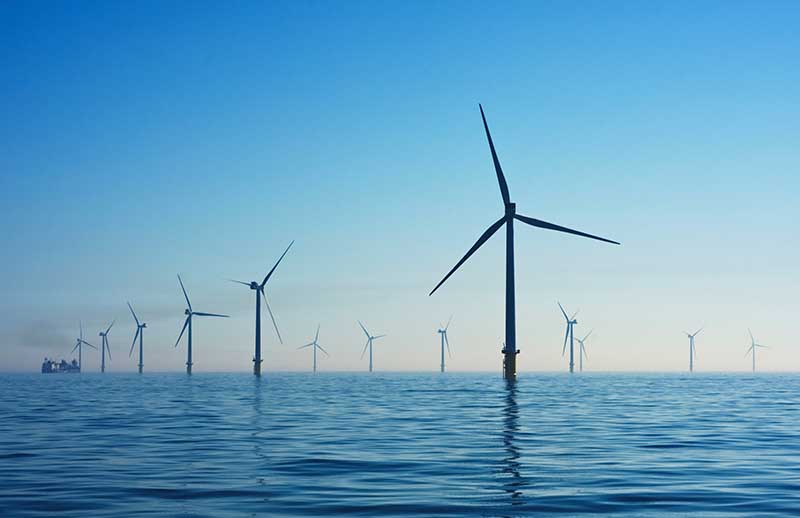Published:

The National Robotarium, a world-leading centre for Robotics and Artificial Intelligence research based at Heriot-Watt’s Edinburgh campus, is leading the development of autonomous systems to support the safe deployment of offshore wind farms in the UK.
Through the ORCA (Offshore Robotics for Certification of Assets) Hub, a consortium of five universities and more than 30 industry and innovation partners, the National Robotarium has become a leader in this area of research, with investment of over £30 million.
The UK is currently the biggest producer of offshore wind energy globally, creating 10 gigawatts a year. However, this is a fast-growing sector and annual production in the UK is forecast to increase to 40 gigawatts by 2030.
Writing in leading industry title Robotics & Innovation, Professor Yvan Petillot, joint academic lead for the National Robotarium, said “Major energy companies have invested in technology that has driven down the cost of production and installation of wind turbines dramatically, at the same time as reliability has increased. Furthermore, the energy production capabilities of turbines has almost tripled in the last 10 years: latest generation wind turbines produce 12 megawatts per turbine, and the biggest farms might have 120 turbines or more, producing the energy equivalent to a nuclear power station for around half the cost.
“The advantage of offshore wind conditions is precisely what makes it a difficult environment in which to monitor and maintain turbines, and this results in three key concerns for the industry: cost, safety and operational logistics.”
The vision for the future of offshore wind farms is that turbines will be fitted with multiple sensors gathering data about their state and health whilst robots carry out repeat inspections and maintenance tasks.
Surface vehicles, such as autonomous boats, might deploy underwater robots to inspect the substructure and the cables that take power out of the turbine; aerial vehicles might inspect and repair the blades; crawling robots could turn their attention to the infrastructure and electric components inside the turbines. These technologies are already under development at the National Robotarium.
Professor Petillot continues: “Over the next decade, together with our industrial and academic partners, we will demonstrate the benefits of robotics to the offshore renewable sector, giving operators confidence that a wind farm is operating properly, information to support decision-making when faced with operational problems, and data to aid the planning process for complex maintenance.
“There is an opportunity to transition offshore workers to onshore - particularly into roles that analyse, interpret and model data. In order to build trust between humans and robots, it will be necessary to maintain a dialogue between the operator and the robotics technology, and for this reason we will always need human insight. A human operator needs to be able to understand and explain why a robotic system is making the decisions it is.
“Twenty to 30 years from now, technology will allow all inspection and repair work to be done remotely from shore. The technical barriers to communication are reducing with 5G connectivity. Beyond cost, safety and logistics, there is the added advantage of being able to deploy precisely the right engineer, working remotely, to carry out a task.
“In order for the UK to retain its world leading position in offshore renewable energy, it is essential for industry to incorporate robotics technology into working practice. Currently, the sector is defining the robotics capabilities it needs to push down cost and improve safety.”
The UK’s success offshore is mirrored in robotics R&D. To continue to take advantage of advances in robotics and autonomous systems, academics believe it will be necessary to train the workforce at all levels to fully understand what robots are capable of.
Professor Petillot added: “Critically, we need to support the emergence of the SMEs that will drive innovation in the field of robotics, and this will be a focus for the National Robotarium. It will enable the vast research that is underway in our academic institutions to be translated into the viable products that are sought after by offshore wind farm operators.”